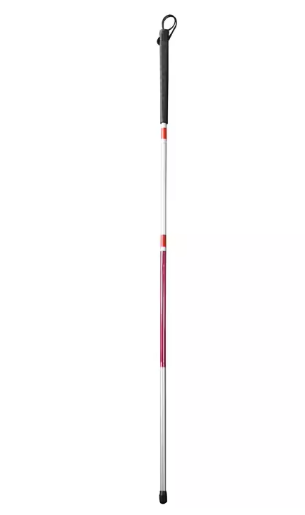Blind stick: a triple beacon that illuminates the darkness
In the murals on the dome of Hagia Sophia, a blind saint holds a wooden stick and crosses thousands of mountains and rivers. This simple wooden stick has passed through thousands of years and still shines with new vitality in the hands of contemporary visually impaired people. The modern blind stick has long surpassed the simple pathfinding tool. It is not only a navigator in the physical world, but also an anchor in the psychological world, and a pass for social interaction, constructing a three-dimensional coordinate for the visually impaired group to walk freely in three-dimensional space.

1. Spatial decoder of the physical world
Every touch of the tip of the cane against the ground is a precise physical calculation. When the tip of the titanium alloy cane slides across the brick joints of the sidewalk, the tactile difference of 0.5 mm can distinguish the deviation of the straight path; when encountering a sudden step, the change in vibration frequency transmitted by the cane body will be transmitted to the brain through the wrist joint within 0.3 seconds, triggering the emergency reflex mechanism. In the complex structure of Tokyo subway stations, skilled users can accurately determine the location of the escalator 17 meters away from the ticket gate by the sound wave reflection of the cane touching the wall.
This spatial decoding capability stems from the perfect combination of ergonomics and material science. The carbon fiber material of contemporary blind sticks can transmit 98% of the vibration information on the ground without loss, and the retractable design allows the detection range to be intelligently adjusted between 0.9-1.5 meters. Experimental data from the American Federation of the Blind in 2019 showed that the reaction speed of subjects using standard blind sticks to avoid obstacles was 0.47 seconds faster than relying solely on hearing. This seemingly small difference often determines the success or failure of a danger avoidance.
2. Confidence Totem in the Psychological World
In the training classroom of the Royal Institute for the Blind in London, when new trainees completed their first independent directional walking, the rhythm of the cane hitting the ground was like the drumbeat of victory. This psychological suggestion comes from the enhanced sense of control brought by the tool. Neurological research shows that the activity of the prefrontal cortex of cane users increases by 22% when moving. This physiological change directly translates into confidence in the control of the environment. When the cane draws a fan-shaped safety zone on the ground, it is like a navigator drawing a navigation track in an unknown sea.
A psychological experiment at the University of Chicago revealed that the social anxiety index of visually impaired people who continued to use a cane decreased by 37%, and the score on the self-efficacy scale increased by 41%. This 120-gram metal rod not only breaks the "curse of mobility", but also reshapes the user's psychological schema. Just as a climber's ice axe is more than just a tool, a cane has been sublimated into a physical symbol of courage and independence in the psychological dimension.
3. Cognitive medium of social interaction
In the crowds on Fifth Avenue in New York, the white cane is like a silent declaration, instantly completing the encoding and decoding of social identity. This visual symbol triggers a chain reaction of group cognition: 83% of pedestrians will take the initiative to give up a safe distance of 1.2 meters, the error of bus drivers' parking positions is reduced by 40%, and the success rate of getting help when asking for directions is increased to 91%. This symbolic value builds a new social contract, transforming the visually impaired from a "group that needs special care" to a "traffic participant with clear behavioral signs."
Sociologist Goffman's "impression management" theory is vividly interpreted here. As a "front-stage device", the cane not only avoids the embarrassment of interpretative interaction, but also establishes an effective communication channel. During the Tokyo 2020 Paralympic Games, the smart cane equipped with LED warning lights increased the efficiency of visually impaired athletes by 60%, which confirms the powerful effectiveness of tool symbols in the reconstruction of social cognition.
From the Pharaoh's scepter in ancient Egyptian murals to the smart navigation device in modern cities, the evolution of the cane has witnessed the progress of human civilization. In the physical dimension, it is an extended sense, in the psychological level, it is a strengthened self, and in the social space, it is a bridge for dialogue. When the tip of the titanium alloy cane knocks on the ground and plays the melody of free walking, this cane interwoven with technology and humanity is opening up a new dimension of light for the visually impaired group.
